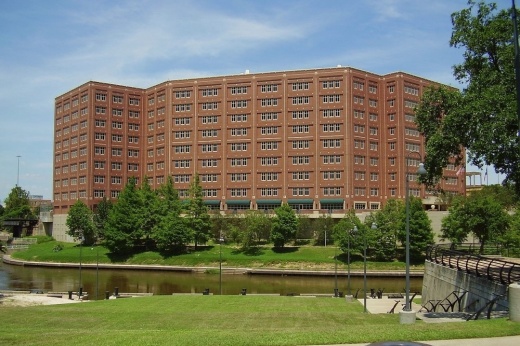Another round of ongoing discussions about major investments surrounding Harris County’s justice and safety-related departments took place at a November Commissioner’s Court meeting, including the decision to approve an $11.3 million contract that would outsource a number of county inmates to a private correctional facility in Mississippi.
Precinct 2 Commissioner Adrian Garcia suggested for a study that would analyze the inmate release process, particularly when it comes to how long someone has to be in jail before a trial is set. He said the numbers of that pretrial population are huge and haven’t changed for more than 10 years.
“I just don’t understand what is the driver of that lack of change. With everything that we’ve done, I just don’t understand why we still have a 75% pretrial status. That’s people that are in jail but haven’t been determined guilty or innocent, one way or another, “ Garcia said.
The details
Newly appointed Harris County Administrator Diana Ramirez led the county’s November presentation to address what they called the challenges within the jail. Ramirez introduced the department’s monthly initiative that will provide monthly updates, analyses, data and staff-level actions that will take at every Commissioner’s Court meeting.
Ramirez said county officials will need to get more sophisticated in how they handle and look at data in order to structure programs that really work.
“It's so nuanced about why people are there and what's happening to them that you have to get down into into the weeds on this to really understand what's happening, and I don't think we've done that quite well enough yet,” Ramirez said.
Digging deeper
As Harris County jail complexes are pushed to their population limits, including the proportion of inmates that are high-risk, county officials looked to hiring and retaining additional jail staff. Overtime for jail staff accounted for 16% of the overall labor budget for the county's sheriff department, according to county budget documents. Commissioners approved increasing detention officer pay and launched an incentive program that offered an additional $1,000 in October.
What county staff found was that the increase in salary pay and incentives has yet to prove effective. The turnover rates, they found, for detention officers was between 1.5-2.5 years.
“Getting the promise of $1,000 when you're in a really stressful job obviously isn't enough. But for us, what that means is that we need to do something different and not just rely on this every-six-month incentive, because it really hasn't resulted in any improvement in retention so far,” Ramirez said.
Zooming in
Harris County's inmate population, both men and women, are currently housed throughout eight detention centers in Texas and Louisiana, not including the number of inmates who will be transferred to Tallahatchie County Correctional Facility, a prison located 500 miles from Houston.
November jail population numbers, according to the county’s dashboard, have reached more than 9,300 people, with 89% being male and 11% being women, both populations from predominantly people of color.
Compared to the third quarter of 2022 where the average daily population rose above 10,000 people for the first time since 2011, November numbers suggest that the population has decreased since then.
Yet, based on the county administration’s presentation, all eight detention centers in both Texas and Louisiana have jail populations that are at least 88%-100% at capacity.
By the numbers
Harris County was cited as one of the 16 Texas counties that violates state safety standards and was found not compliant with minimum jail standards, according to the Texas Commission on Jail Standards. County resources, including major funding, continue to be invested toward jail-related costs. According to Harris County’s budget department documents, approved funding has gone toward initiatives such as:
- $20 million in supplemental funding to restore staffing levels
- $48 million toward outsourcing inmates
- $5.1 million to provide body-worn cameras to detention staff
- $7.8 million in jail medical costs
- $18.7 million in facility maintenance
- $10.4 million in utility costs
Zooming out
The county’s administration department told commissioners Nov. 14 that while staff is committed to working closely with the sheriff’s office and other criminal justice stakeholders in order to address all the issues, one caveat is that they have not determined yet how long it will take for the most difficult challenges to see positive outcomes.
Going forward
The administration department will update commissioners in January regarding the detention officer survey results, where officers were asked about their pay scale and job satisfaction rates.





